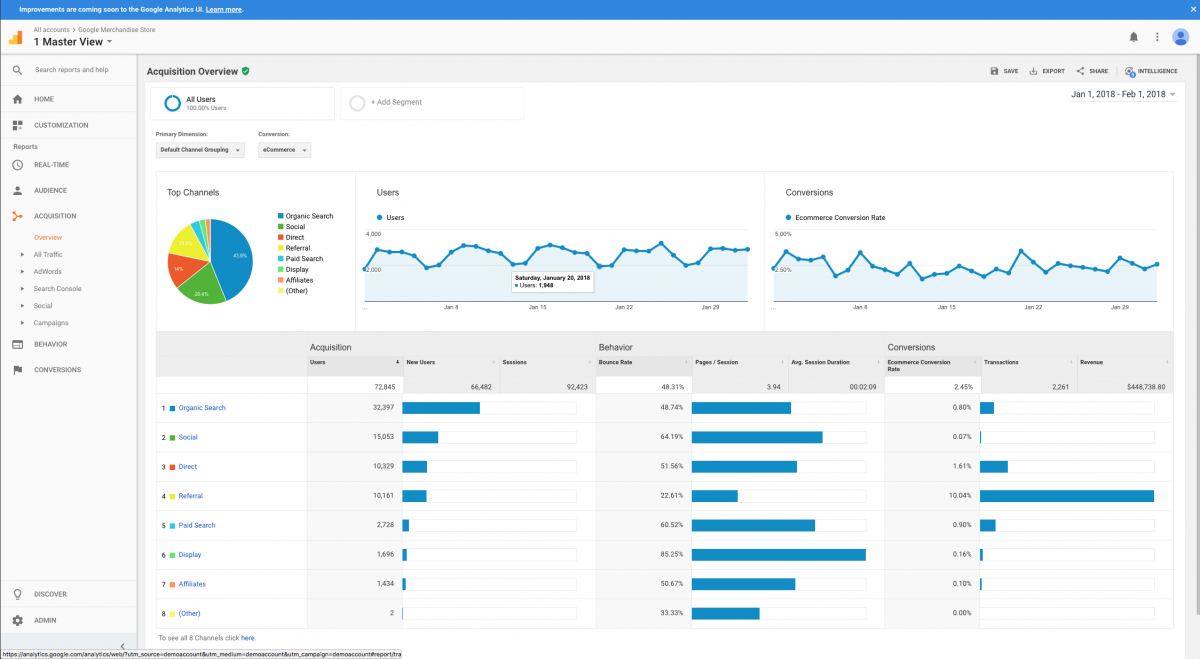- 30 July 2021
- Digital Marketing
- Reading time:11 min
5 Reasons Why Your Ecommerce Conversion Rate Is Low And How To Improve It
With the global increase in online shopping, many businesses focus on increasing traffic to their websites. This is both admirable and necessary, but there comes a point when you need to turn your focus from traffic to conversion rates.

With the global increase in online shopping, many businesses focus on increasing traffic to their websites. This is both admirable and necessary, but there comes a point when you need to turn your focus from traffic to conversion rates. After all, if your eCommerce conversion rate is low, more traffic isn’t the solution that’s going to fix the problem.
You may have spent years building your own eCommerce site, but if you can’t convert visitors into paying customers, your efforts need to be redirected. With enough traffic to your site, conversion rates should be good enough to provide a decent profit, but what if this doesn’t happen? How do you improve your eCommerce conversion rate?
It’s all about conversion rate optimization best practices, which we will cover in a moment. First, however, we will take a look at conversion rates, so you can decide whether your rate is low, really low or desperate! Next, we will show you how to calculate your conversion rate, so that you can gauge whether any changes you make to your website are actually working. We will then look at five best practices that can be used to increase your conversion rates, followed by a few eCommerce tools that will help you to understand why your conversion rates are so low.What is a realistic eCommerce conversion rate?
Whilst any achieved goal can be considered a successful conversion (such as email subscriptions, downloaded eBooks or completed surveys), sales are the conversions that most interest eCommerce operators. A realistic conversion rate is around 2%, although in 2015 it was reported that the conversion rate for Amazon Prime members was an amazing 74%! Whilst you might try to aim for the same conversion rates as Amazon, your best strategy is to calculate your website’s conversion rate for the last 12 months and then aim to beat it this year.
How to calculate your website’s eCommerce conversion rate
The way to calculate your site’s conversion rate is to divide the total number of transactions by the total number of unique visitors to your store, usually in 24 hours. If you want to calculate other conversion rates, for example the rates for email subscriptions, you just substitute the appropriate numbers into the equation.
You can also calculate conversion rates for different locations and demographics if that’s something that’s important to your marketing strategy. This approach is useful if you want to identify which segments are contributing to your website’s overall conversion rate. For example, you can analyse the conversion rates of first time visitors compared to repeat visitors, desktops vs mobile phones vs iPads, and organic search vs paid search vs social media. You can also compare conversion rates between product categories, between seasons and for different promotions. It’s important to remember however, that conversion rates need to be compared over time, as one single point in time doesn’t give you enough information for concrete conclusions. Monthly or weekly comparisons are common, but your conversion rate for the last 12 months will give you a good overview of your website’s current ability to convert shoppers.
If you are lucky, your conversion rates have been increasing over time, but this doesn’t generally happen naturally. More likely, your conversion rates have been static or decreasing over time. So why is this happening and how can you improve your eCommerce conversion rate – whether for your whole website or for a specific product, category or demographic segment?
5 Conversion rate optimization best practices
There are many strategies to increase your conversion rate, but to help make your life easier, here are five best practice options that will provide the biggest impact on your conversion rates.
Streamline online payments
When a visitor has made the decision to purchase a product from your website, you need to make the transaction process as easy and as short as possible. So give them plenty of options, including PayPal, Google Pay and Apple Pay, because these payments take much less time to complete than using a credit card. PayPal is a very good option because they have shortened their payment process even further, making it a one-click process. Payments made using cryptocurrency is also another way to improve your ecommerce conversion rate. Essentially, the more payment options and the fewer the number of steps the better, particularly where purchases are made using mobile phones.
Personalise shopping experiences using new technology
Customers love new technology and they want a personalised shopping experience, so why not give them what they want? A great way to increase online conversions is to use virtual reality where consumers can examine the products before they buy. The novelty of this immersive approach to a consumer’s shopping experience combined with its practicality (because shoppers can’t touch and feel products sold online) offers a high-tech strategy for increasing conversions. Another of the conversion rate optimization best practices is to use AI (artificial intelligence) and machine learning to personalise the customer experience. For example, a contextually relevant site search powered by an AI can provide customers with relevant query suggestions and popular search results on your website. Delivering custom recommendations based on a shopper’s search query can have a very positive impact on your conversion rates. Machine learning can even use predictive algorithms to learn which headings and product page layouts convert best!
Set up voice commerce
Voice assistants and smart speakers have an increasing market penetration with many consumers using them for online purchases. If you get this right, you can end up with more sales, conversions and revenue. Voice commerce uses AVR (automatic voice recognition) and NLU (natural language understanding) to interpret a spoken language, helping shoppers to find specific products online. There’s even such a thing as voice search optimisation, linking voice searches with SEO. It’s estimated that nearly 50% of all searches will soon use voice search and with the popularity of Amazon’s Alexa, it’s easy to see how this can happen. In fact Google and Walmart have combined their efforts, so that Google Home Users can now search the Walmart catalogue. Voice ecommerce has a huge range of applications with the potential to significantly increase online your site’s conversions.
Increase trust with user-generated content
Trust is an important factor for increasing your eCommerce conversion rate and customers trust other customers. They actively search for online reviews and the opinions of other customers. This means that user-generated content, such as online reviews on your product pages, are worth their weight in gold. Apart from simply including a list of reviews at the bottom of each product page, why not include a visual bar graph of customer’s star ratings? You can also include user-generated videos or photos that focus on unpacking or using your products. Don’t forget to add social proof to build trust and boost conversions. This includes social media links, share buttons and logos from other companies that use your products.
Improve product pages
Without a doubt, the product page is where you make or break a sale. There are so many product pages online without any form of product description – just an image, price and size or colour options. This is the page where you need to engage shoppers and persuade them that they need to buy your product. You need to help shoppers imagine how they will feel when they hold your product in their hand and how happy they will be with their purchase. So instead of a bare page or a dry description, write compelling product descriptions with prominent CTAs.
Ecommerce tools to analyse your conversion rates
Now you know five of the conversion rate optimization best practices that will help to increase your online sales, it’s time to look at some of the tools that can help you understand why your conversion rates are so low. These tools help you to understand how customers interact with your website and how you can use this information to boost your conversion rates. Here are two that are easy to use.
Google Analytics: Most websites use Google Analytics, basically because it’s free. However, most people don’t make the best use this platform, even though it offers a huge amount of data that can help increase your conversions. Information about which devices shoppers’ use to reach your website, how long they remain on different pages, their location, and whether they are new or repeat visitors is all available in Google Analytics. It will even calculate conversion rates for set goals.

Mixpanel: The Mixpanel package helps you to convert, engage and retain online shoppers and the starter package is free. It’s used by Uber, Expedia, Shutterfly, Walmart and Twitter, and is designed to help you improve customer experiences on your website. It does this by collecting data, identifying trends, understanding these trends, setting goals and helping you to take action to achieve these goals (increased conversions). In fact, it’s so popular that 50% of Fortune 100 eCommerce sites use Mixpanel, resulting in a 30% increased engagement rate and a 24% increase in user retention. It can help you identify the point of engagement when conversions increase, as well as help you increase shopper loyalty, improve conversions, and learn how shoppers interact with your website.
If you want to improve your ecommerce conversion rate, call acidgreen on 1300 139 658 or send us an email enquiry.
Related articles


